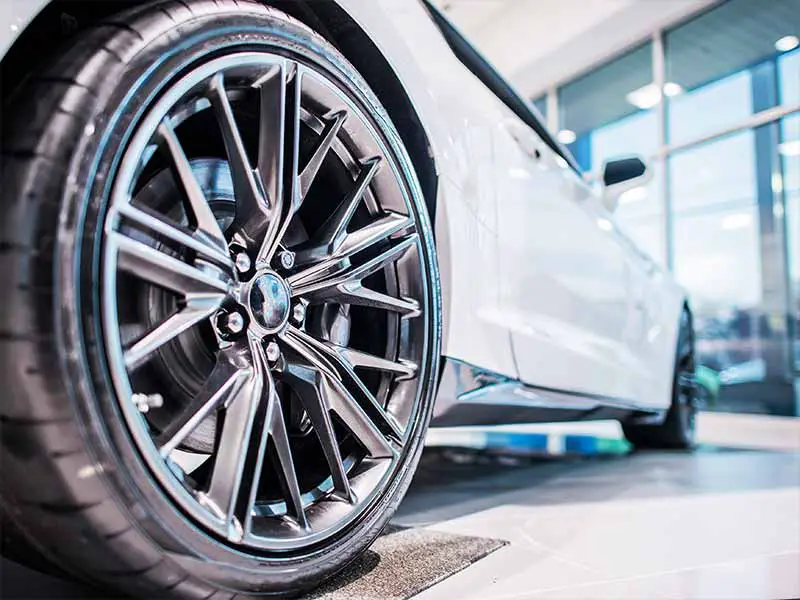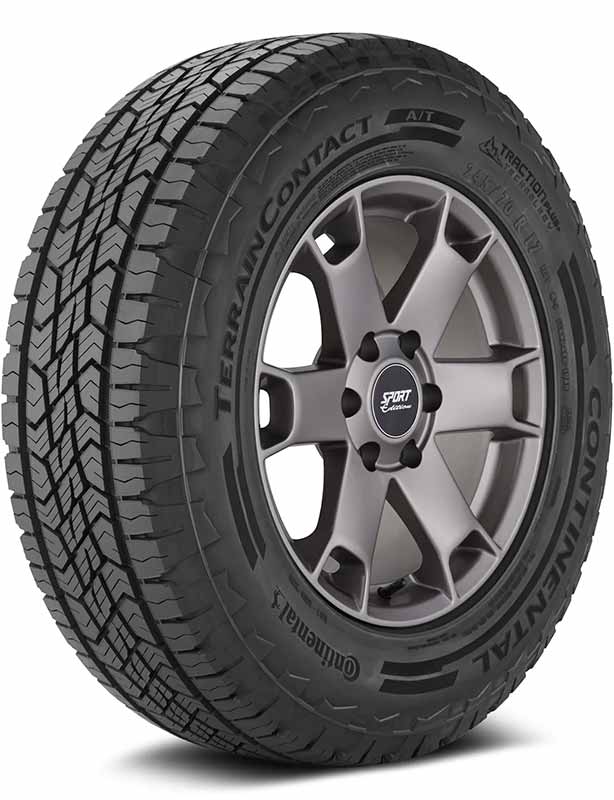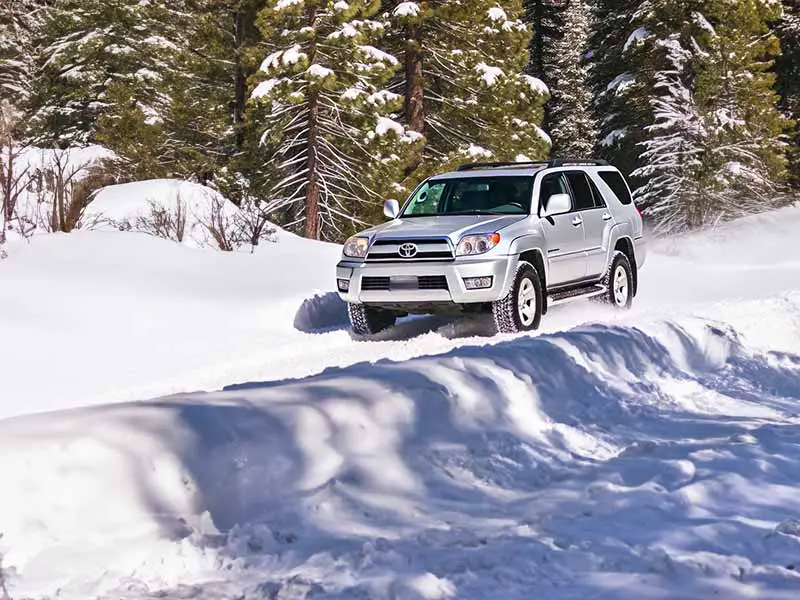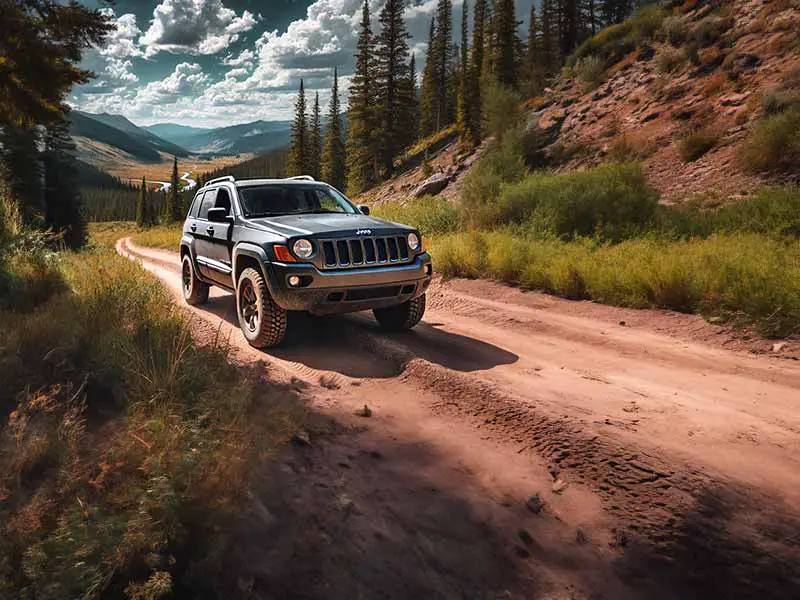The tires on new cars and trucks usually only last 20,000 or 30,000 miles typically. OEM tire life is usually much shorter because the vehicle and tire manufacturers are focused on installing tires on new cars and trucks that will help sell vehicles as opposed to saving you money over the long term.
Why Do New Car Tires Wear Out So Fast?
New cars and trucks usually have tires designed to focus on issues you may notice when test driving a vehicle. Things such as ride comfort and handling.
Most features of tires that are easily noticed benefit from soft rubber compounds. Soft rubber improves traction and ride quality, but tires wear down quickly with softer rubber.
This doesn’t mean that they are bad tires. They actually may be very good tires, just not tires with good tire wear and long service life.
They may be energy efficient, have excellent traction, ride smoothly in rough road conditions, or be very quiet.
Let’s take a closer look.
Tire Life Expectancy Chart
Tire Life Calculator
OEM Tires Meaning
OEM stands for Original Equipment Manufacturer. OEM tires are simply tires specified by the vehicle manufacturer for the car or truck to leave the factory with when they are shipped to the various car dealerships.
OEM Tires Vs Aftermarket
OEM tires and aftermarket tires are designed for different purposes. Let’s cover a bit of what the thought process is for each.
OEM Tires
A lot of thought goes into the selection of tires for your new car or truck. And that critical thinking isn’t focused on ensuring you get the most bang for your buck out of a set of tires.
Car and truck manufacturers are in business to make money. They want to make you happy and convince you to buy that new vehicle. One of the ways they do this is by making sure the tires of their new cars and trucks sitting on dealer lots have comfortable and grippy new tires.
Vehicle manufacturers also work with tire manufacturers to design tires specifically for this purpose. They have well-known tire manufacturers make tires to their specifications that maximize the features they want you to notice while minimizing the ones they hope you don’t.
You won’t notice short tire life until long after you’ve left the dealership and made several car payments. You’re focused on that shiny new vehicle and not the tires it rides on.
Aftermarket Tires
Aftermarket tires are designed to make you happy over the life you own them. When you buy tires you’re focused on how well they fit your unique needs. One of those needs everyone pays attention to when buying tires is tire life.
“How long will these tires last and will they be worth the cost?”
If you’re interested in a comfortable tire, there are aftermarket tires that focus on that. If you’re interested in longer tire life, there are aftermarket tires that can provide that.
The bottom line is you don’t get to pick the tires on your new vehicle but you do when you replace tires. Vehicle manufacturers are going to pick the tires that benefit them and you’re going to pick the tires that benefit you.
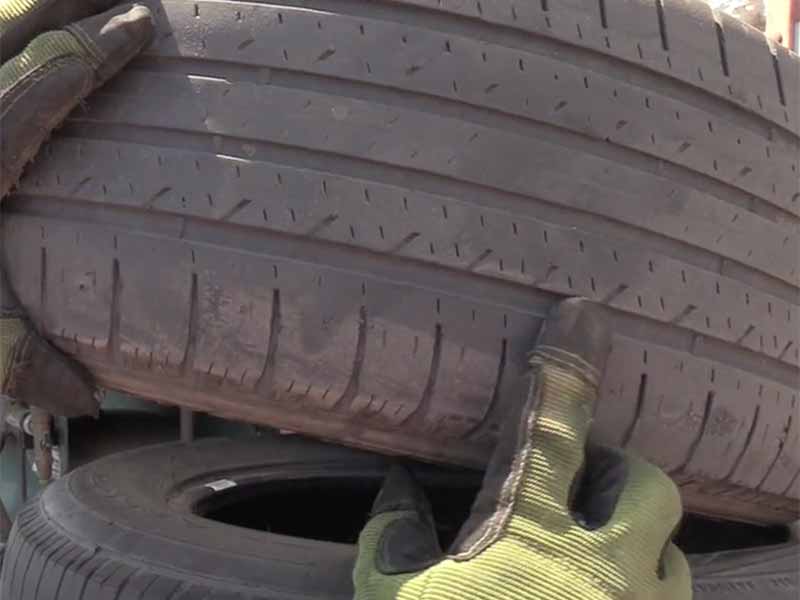
How Long Should Tires Last On A New Car?
Not all new tires on new cars and trucks have short tire life. Some perform very well for long periods of time. Other tires that come with new vehicles may only make it 20,000 to 30,000 miles before they need to be replaced.
Typical all-season tires for average passenger cars and light trucks commonly last 50,000 miles or more.
New cars and trucks will usually not have any of the problems that older vehicles have that can cause tires to become worn more quickly. Suspension components are in excellent shape and alignment is usually perfect.
Assuming there has been no damage to these parts and your wheels and tires have been properly balanced, there should be no reason for your tires to not last as long as possible.
An aggressive driving style would be the only real reason that a new vehicle would wear tires down more quickly if the tires have a good treadwear rating and a long tire mileage guarantee.
How Many Miles Should Tires Last On A New Car?
The best way to determine how many miles your tires should last on your new car or truck is to see if the tire manufacturer provides a tire warranty with a mileage guarantee.
Not all tires have warranties provided by the tire manufacturer and even those that do may not include a mileage guarantee. That said, most tires will have both a warranty and mileage guarantee.
If the tires on your new car or truck don’t have a mileage guarantee, you can check the UTQG Treadwear rating to get a general idea of how long the tires may last.
How Many Miles Should Brand New Tires Last?
New tires should be able to last the guaranteed mileage provided by the tire warranty unless you have an aggressive driving style, don’t perform proper tire maintenance, or there are problems with your suspension components or alignment.
Most common aftermarket tires for the average passenger car or truck will last 50,000 miles or more. Sports car tires typically only last 30,000 miles or so due to the use of softer rubber and more aggressive alignment settings that are designed to improve handling instead of maximizing tire life.
How Long Do Tires Last With Low Mileage
Even tires that don’t get driven on very often will eventually need to be replaced. Tires will dry rot over time due to exposure to sunlight and ozone in the atmosphere. Ultraviolet radiation and ozone break down rubber compounds and cause them to degrade.
You should replace tires older than 6 years as a general rule. Some tires may last longer if they are kept away from direct sunlight, sealed in airtight storage bags, and kept away from large temperature extremes.
How To Make Tires Last Longer?
The key to making tires last longer is proper tire maintenance. Driving style will definitely have a large effect, but proper maintenance of your tires will ensure that you avoid uneven wear which will dramatically shorten tire life.
This is especially true if you’re trying to get the most out of your OEM tires with soft rubber. Let’s take a look at the steps you need to take to ensure your tires are properly maintained.
Air Pressure
One of the most misunderstood tire maintenance aspects is tire pressure. You should check your tire’s pressures monthly for best results. Most drivers rely on their tire pressure monitoring system (TPMS) to let them know when they need to add air to their tires.
Unfortunately, that isn’t the purpose of TPMS. A tire pressure monitoring system is designed to let you know when your air pressure is 25% below the air pressure listed on the tire information sticker in your driver’s door jamb or owner’s manual.
When your tire’s air pressure has dropped to 25% below the recommended level is well below a pressure that will be good for your tire. Uneven wear on the outer edges of the tire will occur and you will put a lot of stress on the sidewalls, potentially causing a catastrophic blowout. Overinflation can cause your tires to wear more in the middle of the tread pattern, which obviously isn’t ideal either.
You could be riding along at an air pressure that is 24% too low for months and never realize it if you’re not checking the pressure in your tires regularly.
Tire Rotation
Making sure you have your tires rotated at regular intervals is one of the most important things you can do to ensure that your tires last as long as possible. Regular tire rotation helps to make sure that your tires wear more evenly.
Each tire position around your vehicle has a different tire wear pattern. This is especially true of front tires and rear ones. You can more evenly distribute this uneven wear by having your tires rotated every 5,000 miles.
Tire rotation prevents tires from wearing more in one spot until they have become bald only in that area, while the remaining tread depth is still very good. This way you are able to use more of your tire tread and get more overall tire life out of them.
Wheel Alignments
One of the most common reasons for uneven tire wear is poor alignment. We recommend having your wheel alignment checked every 10,000 miles. This will take care of many of the causes of uneven wear and shortened tire life.
The cause of many alignment problems is usually potholes and curb strikes. Hard hits to your suspension will damage suspension components and make it difficult to bring your vehicle back into alignment.
The other primary reason you need to have your alignment checked regularly is age. As your car or truck gets older, bushings, shocks, and springs will begin to fail and allow the suspension to fall out of alignment as it sags or shifts.
Having your wheels aligned regularly will ensure that your vehicle drives straight and true. It will also have someone regularly putting eyes on your suspension to identify component damage and failures before they become more serious problems.
Tire Balancing
Most drivers have their tires balanced only when they purchase replacement tires. But you should actually have your tires balanced every 10,000 miles.
Over time, wheels can lose wheel weights, rims can get bent, and as a tire wears it can become unbalanced. Out of balance tires will slightly bounce as it spins which can cause tire wear known as cupping. It can also cause steering wheel vibration or tire noise.
When Should Tires Be Replaced?
You should strongly consider replacement tires once your tread depth reaches 4/32″. By the time your tread depth has dropped to 2/32″ you must replace your tires since they are considered bald at that point.
Stopping distances increase dramatically when compared to new tires as tread depth gets closer to 2/32″ of tread depth. Also, the chances of hydroplaning are greatly increased. If safety is a concern, and it certainly should be, you will want to replace your tires before you reach the minimum legal tread depth.
You can check tread depth with the penny test or a tread depth gauge. Also, you can refer to the tread wear indicators that are built into most tires called wear bars. These small raised bumps at the bottom of the tread grooves are 2/32″ high. Once your tire wear is even with the top of the wear bars, you know you’ve reached the minimum legal tread depth.
Resources
Below are some links you may find helpful when learning about tires
Final Thoughts
The new tires on your new car or truck are perfectly good, but there’s a good chance they won’t last long. The new tires vehicle manufacturers choose to install on their vehicles aren’t picked for their tire tread life.
OEM tires are chosen for ride quality and handling characteristics. There’s no benefit to the vehicle manufacturer installing tires that last a long time.
Good luck and happy motoring.
